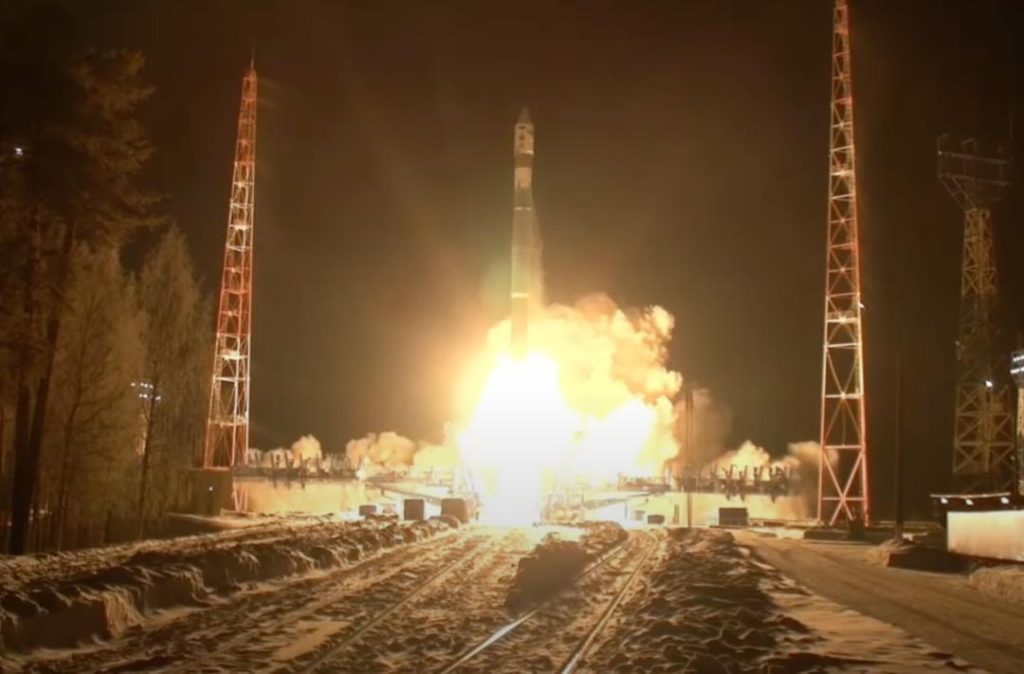
Secretive Russian Satellites Release Mysterious Object into Space
In a move that has left astronomers and space enthusiasts alike scratching their heads, a trio of secretive Russian military satellites has released a mysterious object into orbit. The three satellites, Kosmos 2581, 2582, and 2583, were launched on a Soyuz-2.1V rocket early in February 2025. The exact purpose and nature of the satellites and the object they released remain shrouded in secrecy, fueling speculation and concern about the intentions behind this unusual maneuver.
According to reports, the US Space Force has catalogued a new object associated with the Kosmos-2581/2582/2583 launch. The object, which may have separated from Kosmos-2583 on March 18, has sparked widespread curiosity and concern about its purpose and potential implications for global security.
The Kosmos 2581, 2582, and 2583 satellites were launched by Russia’s military space agency, Roscosmos, on February 6, 2025. The exact purpose of the launch was not publicly disclosed, but it is believed to be related to Russia’s military satellite program, which is designed to provide strategic communication and surveillance capabilities.
The release of the mysterious object has raised concerns about the potential use of space for military purposes, particularly in light of Russia’s increasingly aggressive behavior in Ukraine and its ongoing military buildup along its borders with Ukraine and NATO member states.
“This is a very unusual and concerning development,” said Dr. Jonathan McDowell, an astronomer at the Harvard-Smithsonian Center for Astrophysics. “While it’s possible that the object is simply a piece of space junk or a discarded component, it’s also possible that it’s a new satellite or some kind of weapon system.”
McDowell, who was the first to report on the object’s discovery, said that it is difficult to determine the object’s purpose without more information. However, he noted that the object’s trajectory and orbit suggest that it may be designed to operate in a specific region of space or to perform a specific function.
The release of the mysterious object has also raised concerns about the potential for space debris and the risks it poses to other satellites and spacecraft. According to NASA, there are currently over 500,000 pieces of space debris orbiting the Earth, including old satellites, rocket parts, and other debris.
The increasing proliferation of space debris is a major concern for space agencies and satellite operators around the world, as it can cause devastating damage to operational satellites and even pose a risk to human life.
In response to the release of the mysterious object, the Russian space agency has refused to comment on the matter, citing security concerns. The US Space Force has also declined to comment, but has confirmed that it is monitoring the situation and will provide updates as more information becomes available.
As the situation continues to unfold, concerns about the potential use of space for military purposes are likely to grow. The release of the mysterious object has highlighted the need for greater transparency and cooperation in the development of space technologies and the use of space for military purposes.
“In an era of increasing global tensions and competition, it is more important than ever that we promote transparency and cooperation in the development of space technologies and the use of space for military purposes,” said Dr. McDowell. “The release of this mysterious object is a stark reminder of the risks and challenges posed by the militarization of space.”
In conclusion, the release of the mysterious object by secretive Russian military satellites has raised serious concerns about the potential use of space for military purposes and the risks it poses to global security. As the situation continues to unfold, it is essential that governments and space agencies around the world work together to promote transparency and cooperation in the development of space technologies and the use of space for military purposes.






